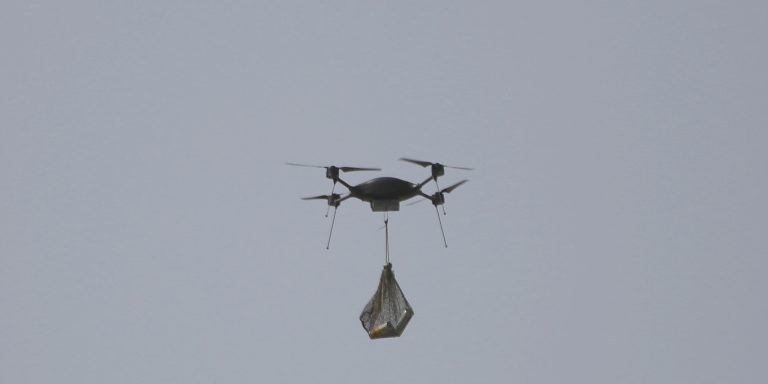INTELBRIEF
October 3, 2018
IntelBrief: Terrorists’ Use of Drones and Other Emerging Technologies

- Last week, it was revealed that several individuals in Denmark were arrested trying to purchase drones they intended to send to the Islamic State in Iraq and Syria.
- The use of drones and other emerging technologies by terrorists and violent non-state actors is not science fiction, nor is it a threat simply to worry about in the future; it is happening already.
- Counter-terrorism officials will need to keep this issue in perspective and to avoid engaging in threat inflation, while at the same time remaining cognizant of ‘black swan’ events like a terrorist attack combining drones and weapons of mass destruction.
- The proliferation and advance of new technologies typically outpaces the laws and policies designed to govern them.
.
A recent case in Denmark involved the arrest of two individuals who were accused of violating Danish anti-terror laws for purchasing drones they intended to send to members of the so-called Islamic State in Iraq and Syria. And although there have been few additional details revealed about the case, what it portends for the future of terrorism is troubling. Indeed, the use of weaponized drones by terrorists is no longer simply a concern for the future, but in fact has been slowly unfolding over the past years. In Yemen, Houthi rebels used unmanned aerial systems to attack Saudi air defenses. Hezbollah, perhaps the world’s most advanced terrorist organization, has used drones against the Islamic State in Syria. Drones can be employed by terrorists and insurgents for intelligence, surveillance, and reconnaissance missions, or they can be weaponized, as witnessed by the Islamic State using a drone to drop a grenade on an adversary’s military base. And in early January, Turkish-backed rebels used drones to conduct ‘swarming’ attacks on two Russian bases in Syria.
Terrorists can harness the power of drones and other emerging technologies with the help of state sponsors, as with the case of Hezbollah and Iran, or by learning on their own. The barriers to entry for individuals and small groups determined to learn the intricacies of small unmanned aerial systems are incredibly low. The Internet provides a bevy of ‘do-it-yourself’ manuals for mastering drones and an array of commercial-off-the-shelf technologies. A ‘black swan’ event—something that has a low likelihood of occurring but has significant consequences if it does—is an attack where terrorists use drones to disperse chemical or biological agents against civilians in a crowded location. Al-Qaeda and other millenarian groups have long sought to execute such an attack, perhaps modeled on the 1995 Tokyo sarin gas attack launched by Aum Shinrikyo. That attack killed a dozen people, but achieved the attackers’ primary objective of perpetuating the psychological dimension of terrorism.
The sheer ubiquity of future private-sector commercial and personal use of drones will lead to a highly congested airspace, which could allow terrorists to camouflage their drones amidst the regular air traffic that comes to define major cities and urban areas. Moreover, it is not only drones that terrorist will seek to exploit in the future: other emerging technologies will likely prove attractive to terrorists as well. These include virtual currencies, new advances in encrypted communications, and artificial intelligence. 3-D printing, or additive manufacturing, has been used by individuals to print various weapons that are difficult to trace. Furthermore, what is worrisome is not simply the use of technologies in isolation, but the combination of these technologies coupled in real-time with an actual kinetic attack that could prove overwhelming for law enforcement, intelligence services, and security forces.
What the case in Denmark shows is that terrorist groups will continue to seek access to advanced weaponry and disruptive technologies. The relative ease with which commercial off-the-shelf technologies can be obtained is of obvious concern to governments. In August, there was an assassination attempt against Venezuelan President Nicolas Maduro using two armed drones. The attempt failed but the potential implications are enormous. Crafting an adequate defense to combat this threat will require sustained coordination at multiple levels of government. Current countermeasures include electronic jamming, but this response is far from foolproof. What’s more, it is often unavailable to law enforcement and security services at local levels, where this threat is likely to be most acute. As has occurred in other areas, the proliferation and advance of new technologies typically outpaces the laws and policies designed to govern them.
.
For tailored research and analysis, please contact: info@thesoufancenter.org
[video width="960" height="540" mp4="https://thesoufancenter.org/wp-content/uploads/2018/10/IB-1003.mp4" poster="https://thesoufancenter.org/wp-content/uploads/2018/10/AP_18228407844448.jpg"][/video]